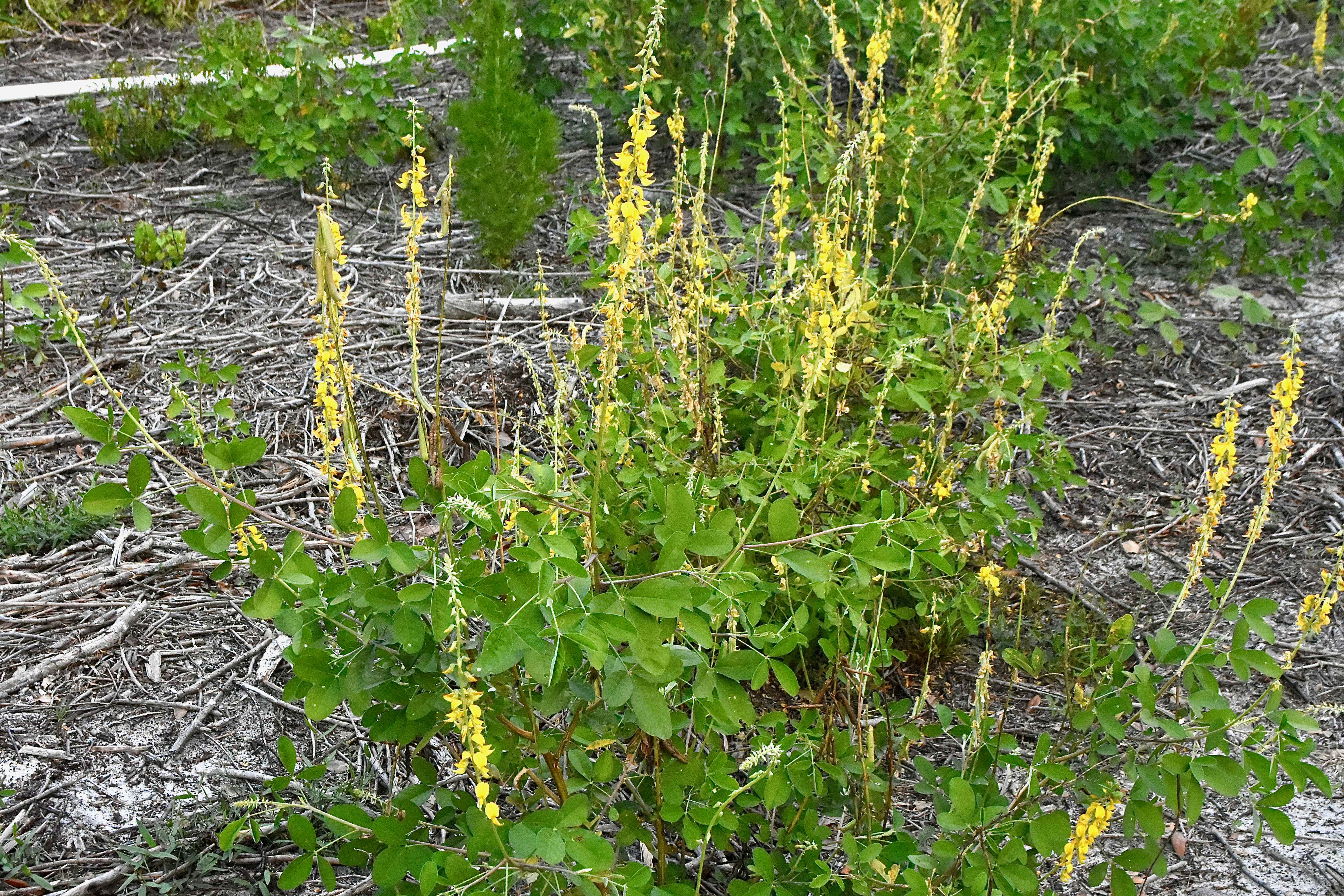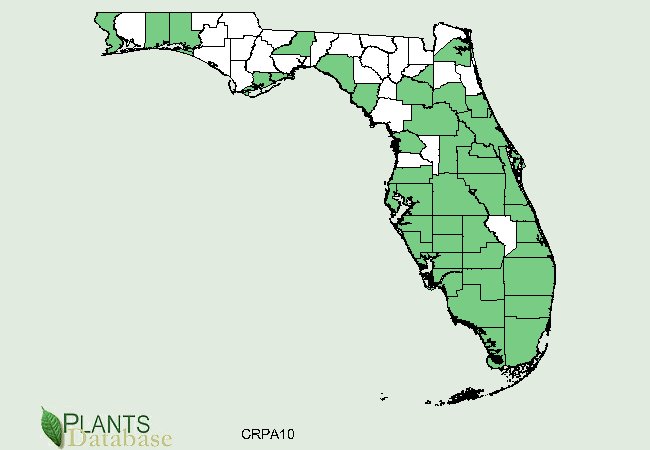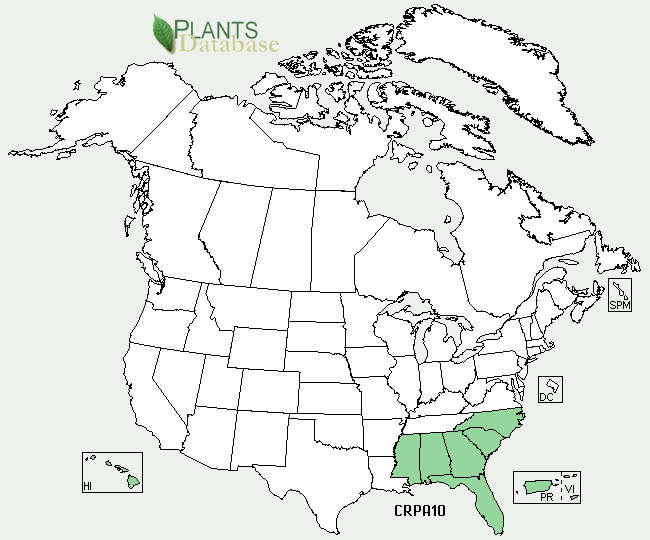
Smooth rattlebox, photographed at Blazing Star Environmental Preserve, Boca Raton, Palm Beach County, in May 2019.
There are seven species of rattlebox found in South Florida, only two of which are Florida natives. This one, smooth rattlebox, Crotalaria pallida, is an import from Africa.
All rattlebox species have two things in common: yellow flowers and a pea-pod fruit that rattles when ripe. Smooth rattlebox is an upright plant with leaflets of three, and produces a large, dense spike of showy flowers at the end of the stem. The plant itself can grow to nine feet tall. By contrast, Florida natives low rattlebox and rabbit bells are ground-huggers, and their flowers are less showy.
Smooth rattlebox is found throughout Florida, but more from the central Peninsula southward to the Keys. It's also found throughout the southeastern United States. Smooth rattlebox has become naturalized in warmer places around the globe, including parts of Asia and South America. It is upright, tall, with a long flower spike atop the stem. The flowers are yellow, sometimes with some red striping mixed in, and appear year-round. It has compound leaves, each with three large, oval-shaped leaflets. It has pea-like pods about an inch-and-a-half long and covered with fine hairs. Another Crotalaria species called shake-shake, has shaggy hair covering the pods.
Nonnative crotalaria species, including smooth rattlebox were exported around the globe as groundcovers and as a "green manure" crop because of their ability to improve soil nutrients. Ag experts still recommend one species, C juncea, AKA sunn hemp, for use by farmers. Crotalaria can take nitrogen from the air and with the aid of certain bacteria, fix it to the soil, reducing the need for fertilizers. Smooth rattlebox was especially popular in West Africa and Southeast Asia for use in large-scale agriculture. The problem with crotalaria is that they contain a group of chemicals called pyrrolizidine alkaloids, which are highly toxic to birds and mammals. What's worse, is the effect they have is time-delayed. Eat it and symptoms might not begin to show for weeks.
There is one species, however, that uses the plant's toxicity to its advantage, and that's the rattlebox moth, Uthetheisa ornatrix. Much like monarch butterflies use milkweeds to produce both color and poison, the rattlebox moth uses members of the crotalaria family. It's one of the few Florida moths that are showy.
At the same time, smooth rattlebox has been used for food and medicine in various places. The seeds are boiled for several hours, wrapped in banana leaves and left to ferment to remove the poisons. The resulting product is called dage. Roasted seeds are used to make "coffee," while the flowers are eaten as a vegetable. It's used medicinally to treat urinary problems, reduce fevers and inflammation. Scientists have found that smooth rattlebox has antibiotic, antifungal and antitumor properties.
Arkansas considers all crotalaria members to be noxious weeds, but crotalaria is not so listed in Florida. Some experts are keeping an eye on this plant to see how it develops. Part of the problem is those pods contain a lot of seeds, giving smooth rattlebox the ability to spread rapidly. Smooth rattlebox was first noticed at Jonathan Dickenson State Park in 1975. In 1992, a survey found it in a few disturbed sites. By 2010, it had taken over 60 percent of the cover along a 4.3-mile stretch of road within the park.
Other common names include shake shake, rattlepod and devil-beans. It is a member of Fabaceae, the pea family.
Click on photo for larger image
U.S. Department of Agriculture Distribution Maps



Links for



